Watching Sports Home Advantage
The Comfort of the Couch – Exploring the Hidden Benefits of Remote Sports Viewing Beyond the Stadium – How Technology, Access, and Experience Shape Modern Fandom Watching
Rethinking the Spectator Watching Experience
In today’s hyper-connected world, the way we consume sports has evolved dramatically. While attending live events still holds cultural and emotional significance, remote viewing has become a compelling alternative. From the comfort of home, fans can access high-definition visuals, expert commentary, and real-time statistics. These features offer a level of control and insight that live attendance often lacks. Remote viewing isn’t just a convenience—it’s a transformation of how we engage with sport, community, and storytelling.

Visual Clarity and Replay Access
Broadcasts offer unmatched visual precision. Multiple camera angles capture every detail, from player expressions to tactical formations. Slow-motion replays allow fans to dissect pivotal moments, enhancing understanding and fueling debate. Live attendees often miss key plays due to distance or distraction, while TV viewers enjoy curated perspectives designed for clarity. On-screen graphics provide real-time stats and context, enriching the narrative and making complex sports more accessible. Remote viewers can pause, rewind, and rewatch, transforming passive watching into active engagement. Commentators offer expert analysis, breaking down strategies and decisions that elevate the experience beyond mere entertainment.
For sports like tennis or cricket, where precision matters, broadcast clarity is essential. Even casual fans benefit from visual aids that explain rules and tactics. Live stadiums rarely offer such educational support. TV viewing democratizes expertise, allowing anyone to become a more informed fan. This fosters deeper emotional investment and long-term loyalty. Remote viewing bridges the gap between spectacle and understanding, turning spectators into analysts and storytellers. The intimacy of close-up shots adds emotional depth, allowing fans to see the tension, joy, and heartbreak on players’ faces. This humanizes the sport and strengthens connection.
In contrast, live events often feel distant and fragmented. Broadcasts offer a cohesive, curated experience that ensures every moment is seen, understood, and remembered. The ability to revisit controversial calls or spectacular goals adds a layer of engagement that live viewing simply cannot match. Ultimately, the clarity and control offered by remote viewing redefine what it means to truly witness a game.
Comfort and Convenience
Watching from home offers physical and emotional comfort that live events often lack. There’s no need to navigate traffic, weather, or crowds, and fans can enjoy the game in their preferred environment. This reduces stress and enhances enjoyment. Remote viewing allows for multitasking—viewers can cook, relax, or socialize while watching. Live events demand full attention and physical presence, which can be exhausting or impractical.
Home viewers control volume, lighting, and seating, shaping mood and focus. Streaming platforms offer flexibility in timing, allowing fans to watch live or catch up later. This accommodates diverse schedules and lifestyles. Remote viewing is inclusive, welcoming fans with mobility or sensory challenges who may find stadiums inaccessible. Comfort also extends to emotional safety—at home, fans can react freely without judgment.
They can celebrate, vent, or disengage as needed, fostering a healthier relationship with sports. Remote viewing reduces exposure to aggressive crowds or unsafe environments, minimizing sensory overload and anxiety. Comfort enhances concentration and emotional resonance, allowing fans to immerse themselves without distraction. This leads to deeper engagement and satisfaction.
In essence, remote viewing prioritizes well-being and transforms sports into a personalized, enriching ritual. It’s not just about convenience—it’s about creating a space where fans can connect with the game on their own terms.
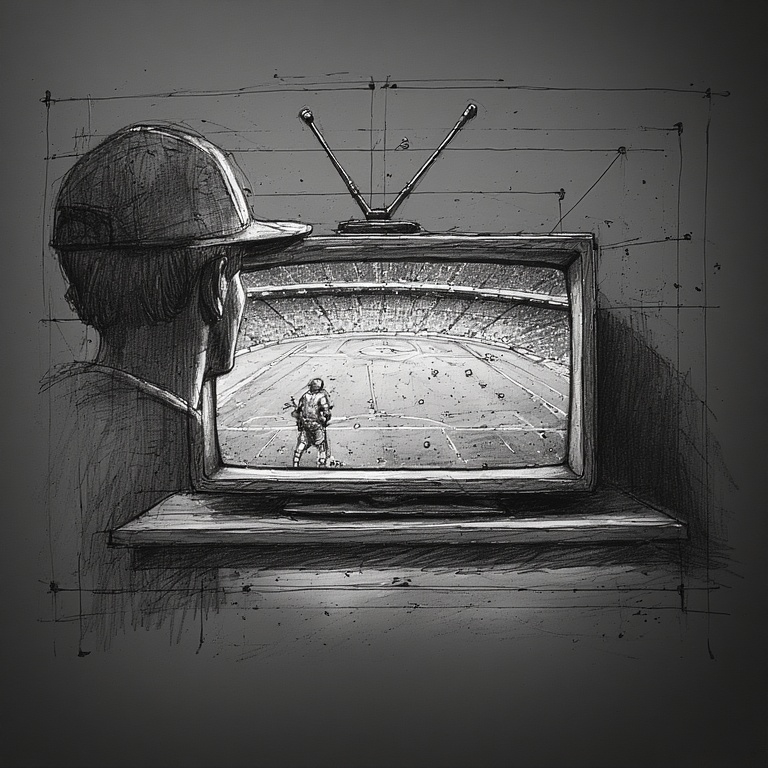
Affordability and Accessibility
Attending live sports events can be financially burdensome. Between ticket prices, transportation, parking, food, and merchandise, the costs quickly add up. For many fans, especially families or students, these expenses make regular attendance unrealistic. Remote viewing, on the other hand, eliminates most of these costs, offering a more inclusive way to engage with sports.
Streaming platforms and television broadcasts provide tiered access, from free-to-air channels to premium subscriptions. This flexibility allows fans to choose what fits their budget without sacrificing quality. Accessibility also extends to geography—fans can watch international matches without traveling across borders. This global reach fosters cross-cultural fandom and expands the sport’s influence.
Remote viewing supports fans with mobility challenges, sensory sensitivities, or health concerns. Stadiums may lack adequate accommodations, but home viewing allows for personalized comfort. Language options, subtitles, and alternate commentary streams further enhance accessibility. These features make sports more inclusive for multilingual audiences and those with hearing impairments.
Technology empowers viewers to customize their experience. Fans can select camera angles, adjust audio levels, and even follow multiple games simultaneously. This level of control is impossible in a live setting. Remote viewing transforms sports into a flexible, user-centered experience. It removes barriers and opens doors for broader participation.
Ultimately, affordability and accessibility are not just conveniences—they’re catalysts for equity. They ensure that sports remain a shared cultural experience, not a luxury. Remote viewing democratizes fandom, allowing anyone, anywhere, to be part of the action.
Enhanced Commentary and Analysis
One of the most valuable aspects of remote viewing is access to expert commentary. Broadcasters employ analysts, former athletes, and tacticians who break down plays in real time. Their insights add layers of understanding that deepen the viewer’s appreciation of the game.
Live attendees may hear crowd reactions or stadium announcements, but they miss the nuanced breakdowns offered on TV. Commentary provides context—explaining formations, strategies, and player psychology. This transforms the game from spectacle to narrative.
In-depth analysis helps fans understand why certain decisions are made. It reveals the chess match behind the physical action. For newcomers, this guidance is essential for learning the sport’s rules and rhythms. For seasoned fans, it offers fresh perspectives and deeper engagement.
Remote viewing also includes pre-game and post-game analysis. These segments explore team dynamics, historical rivalries, and statistical trends. They frame the event within a broader storyline, enriching the emotional stakes.
Commentary can be tailored to different audiences. Some broadcasts offer beginner-friendly explanations, while others dive into advanced metrics. This segmentation ensures that all fans feel included and informed.
Live events rarely provide this level of intellectual engagement. The focus is on atmosphere, not analysis. Remote viewing, by contrast, invites reflection and discussion. It encourages fans to think critically and emotionally.
In essence, commentary turns sports into a shared learning experience. It builds community through insight and storytelling. And it elevates the viewer from passive observer to active participant.

Emotional Control and Personal Space
Watching sports can be an emotional rollercoaster. Joy, frustration, anxiety, and elation often collide in rapid succession. In a stadium, these emotions are amplified by crowd energy and social pressure. Remote viewing offers a more private, controlled environment for processing these feelings.
At home, fans can react freely without fear of judgment. They can cheer, cry, or disengage as needed. This autonomy fosters a healthier emotional relationship with sports. It allows viewers to set boundaries and manage their reactions.
Live events may expose fans to hostile crowds, aggressive behavior, or uncomfortable interactions. These factors can detract from the enjoyment and even pose safety risks. Remote viewing eliminates these stressors.
Personal space is sacred—especially during emotionally charged moments. Watching from home ensures that fans can experience the game on their own terms. They can choose who they watch with, or watch alone.
This control enhances emotional resonance. It allows fans to connect more deeply with the game and its narrative. They can reflect, celebrate, or mourn without external interference.
Remote viewing also supports mental health. It reduces overstimulation and anxiety, especially for neurodivergent fans. The ability to pause or step away is invaluable.
In contrast, live events demand constant presence and engagement. There’s little room for emotional regulation. Remote viewing offers flexibility and compassion.
It respects the viewer’s emotional needs and preferences. And it transforms sports into a more mindful, inclusive experience.
Multigame and Multiscreen Flexibility
One of the most underrated advantages of remote viewing is the ability to follow multiple games simultaneously. Fans can switch between matches, monitor scores across leagues, and even watch split-screen broadcasts. This flexibility is impossible in a live stadium, where attention is confined to a single event.
Streaming platforms and sports apps allow viewers to track real-time stats, player movements, and social media reactions. This creates a dynamic, layered experience that mirrors the complexity of modern sports culture. Fans can engage with multiple narratives at once—following a local derby while keeping tabs on an international tournament.
Multiscreen setups enhance immersion. Viewers can watch the game on one screen, analyze data on another, and chat with fellow fans on a third. This convergence of media transforms sports into a multidimensional ritual. It reflects how audiences consume content today—fluidly, interactively, and socially.
Live events offer intensity but lack this breadth. Remote viewing empowers fans to curate their own experience, choosing what matters most in the moment. It’s not just about watching—it’s about orchestrating a personal symphony of sport.

Weather and Environmental Control
Weather can dramatically affect the live sports experience. Rain, heat, wind, or cold can make stadium attendance uncomfortable or even unsafe. Remote viewing eliminates this variable entirely. Fans can enjoy the game in climate-controlled environments, free from the unpredictability of nature.
This control enhances focus and enjoyment. There’s no need to worry about sunburn, frostbite, or soggy seats. At home, viewers can adjust lighting, temperature, and ambiance to suit their mood. This creates a more relaxed and attentive atmosphere.
Weather also impacts gameplay. Poor conditions can lead to delays, cancellations, or subpar performances. Remote viewers are shielded from these frustrations. They can switch to other matches or catch up later without disruption.
Environmental control extends beyond weather. It includes noise levels, crowd behavior, and personal space. Remote viewing allows fans to escape the chaos and curate a peaceful, engaging experience.
In essence, it’s about removing distractions and enhancing connection. When the environment is optimized, the game becomes more vivid, more meaningful, and more memorable.
Safety and Security
Safety is a growing concern at live sports events. Large crowds, alcohol consumption, and heightened emotions can lead to unpredictable situations. Remote viewing offers a secure alternative. Fans can enjoy the game without worrying about physical altercations, theft, or emergency evacuations.
Security protocols at stadiums are improving, but risks remain. Remote viewing eliminates exposure to these hazards. It’s especially important for families, elderly fans, and those with health conditions.
Watching from home ensures peace of mind. There’s no need to navigate unfamiliar areas, late-night travel, or crowded public transport. Fans can relax and focus on the game.
Safety also includes emotional well-being. Remote viewers avoid hostile chants, aggressive rivalries, and uncomfortable interactions. They control their social environment, choosing who to watch with and how to engage.
This autonomy fosters a more respectful and inclusive experience. It allows fans to celebrate without fear and connect without conflict. In today’s world, safety is not a luxury—it’s a necessity. Remote viewing meets that need with grace and reliability.
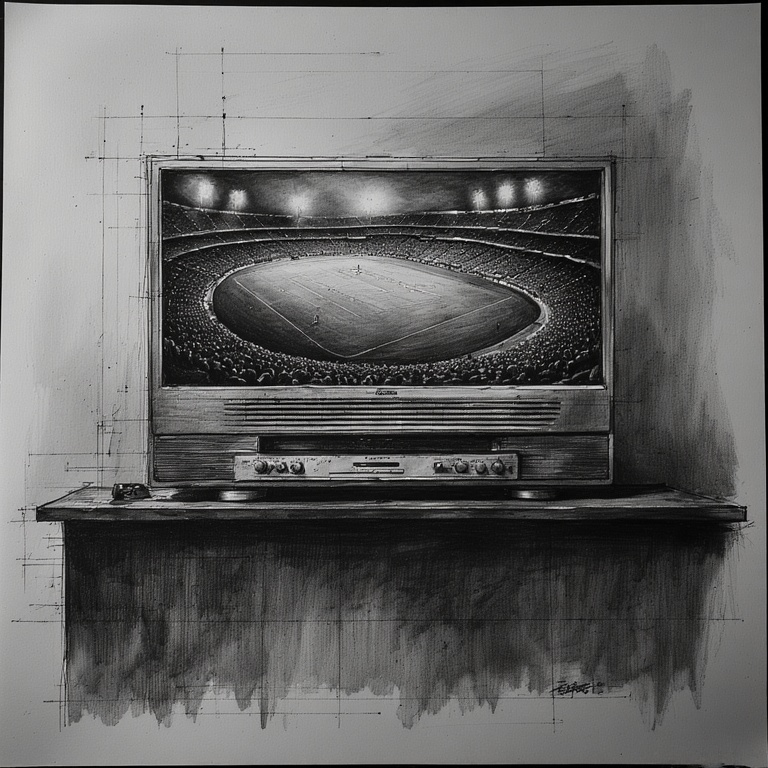
Family and Community Engagement
Remote viewing makes sports more accessible to families. Parents can watch with children in a safe, controlled environment. This creates opportunities for bonding, learning, and shared excitement.
Live events may be too loud, crowded, or expensive for young fans. At home, families can pause the game to explain rules, celebrate together, or take breaks. This flexibility supports deeper engagement and emotional connection.
Community engagement also flourishes through remote viewing. Friends can host watch parties, connect via group chats, or share reactions on social media. These interactions build camaraderie and collective memory.
Remote viewing doesn’t isolate—it connects. It allows fans to participate in global conversations, join fan forums, and contribute to digital fandoms. These communities are vibrant, diverse, and inclusive.
Live events offer intensity, but remote viewing offers intimacy. It transforms sports into a shared ritual, woven into the fabric of daily life.
Customization and Control
Remote viewing offers a level of customization that live events simply cannot match. Fans can choose their preferred language, commentary style, and even camera angles depending on the platform. This personalization transforms the viewing experience into something tailored and intimate. It allows fans to engage with the game in a way that reflects their preferences and needs.
Volume levels, screen brightness, and seating arrangements are all under the viewer’s control. This autonomy enhances comfort and focus, making the experience more immersive. Viewers can also decide when and how to engage—whether they want to watch the full match, skip to highlights, or follow along with live stats.
Live events are fixed in format and pace. Remote viewing, by contrast, is fluid and adaptable. Fans can pause the game to take a break, rewind to rewatch a key moment, or fast-forward through downtime. This flexibility respects the viewer’s time and attention.
Customization also extends to social engagement. Fans can choose to watch alone, with family, or in digital communities. They can mute commentary, switch feeds, or follow alternate broadcasts. This level of control empowers fans to shape their own narrative.
Ultimately, remote viewing puts the fan in the director’s chair. It’s not just about watching—it’s about curating an experience that resonates personally and emotionally.
Time Efficiency and Scheduling
Live sports events require significant time investment. From commuting to queuing, the logistics can consume hours before and after the match. Remote viewing eliminates these inefficiencies. Fans can tune in instantly, without leaving their homes or rearranging their schedules.
It allows sports to fit into daily life rather than disrupt it. Viewers can watch during lunch breaks, after work, or while multitasking.
Time efficiency also enhances engagement. Fans are more likely to follow multiple teams or leagues when the barrier to entry is low. Remote viewing supports casual and committed fandom alike.
Scheduling flexibility means fans don’t have to miss games due to travel or obligations. They can record matches, stream replays, or catch highlights on demand. This accessibility keeps fans connected even when life gets hectic.
Live events are bound by fixed start times and durations. Remote viewing adapts to the viewer’s rhythm. It respects their time and offers options.
In a fast-paced world, this flexibility is not just convenient—it’s essential. It ensures that sports remain a source of joy, not stress.

Inclusivity and Representation
Remote viewing platforms are increasingly designed with inclusivity in mind. They offer features like closed captioning, audio descriptions, and multilingual commentary. These tools make sports accessible to fans with diverse needs and backgrounds.
Live stadiums often fall short in accommodating disabilities or language diversity. Remote viewing bridges that gap. It ensures that everyone can participate fully, regardless of physical ability or linguistic fluency.
Representation also extends to content. Broadcasts often highlight diverse athletes, stories, and cultures. They showcase women’s leagues, para-sports, and grassroots competitions. This visibility fosters a more inclusive sports culture.
Remote viewing allows fans to choose what they watch. They’re not limited to mainstream events or dominant narratives. They can explore niche sports, regional teams, and underrepresented voices.
This diversity enriches the fan experience. It builds empathy, curiosity, and global awareness. Live events may offer spectacle, but remote viewing offers perspective.
Inclusivity is not just a feature—it’s a philosophy. It transforms sports into a space where everyone belongs.
Technological Integration and Innovation
Remote viewing is at the forefront of technological innovation. Augmented reality, real-time analytics, and interactive features are redefining how fans engage with sports. These tools offer deeper insight and richer storytelling.
Live events rely on physical presence, but remote platforms leverage digital enhancements. Fans can view heat maps, player tracking, and predictive models during the game. This data adds layers of understanding and excitement.
Interactive features allow viewers to vote on plays, participate in polls, or access behind-the-scenes content. These elements foster engagement and agency.
Technology also supports personalization. Algorithms recommend matches based on viewing history. Fans receive tailored content that aligns with their interests.
Live events are static; remote viewing is dynamic. It evolves with the viewer and the sport.
Innovation ensures that remote viewing remains fresh and compelling. It turns sports into a living, breathing digital ecosystem.
Global Reach and Cultural Exchange
Remote viewing opens the door to global sports engagement. Fans can follow teams and athletes from countries they’ve never visited, expanding their cultural horizons. This exposure fosters empathy, curiosity, and appreciation for diverse traditions. Sports become a bridge between communities, not just a local spectacle.
Live events are geographically limited, but broadcasts transcend borders. Viewers in Sydney can watch a match in Buenos Aires, Tokyo, or Dakar in real time. This global reach builds international fan bases and shared rituals. It also introduces viewers to different styles of play, commentary, and celebration.
Cultural exchange is embedded in the remote viewing experience. Fans learn chants, customs, and histories from around the world. They engage with multilingual broadcasts and cross-cultural storytelling. This enriches the emotional and intellectual dimensions of fandom.
Remote viewing platforms often highlight global tournaments, from the Olympics to regional leagues. These events showcase athletic excellence and cultural pride. They remind viewers that sport is a universal language.
In a world that often feels divided, remote sports viewing offers connection. It’s a celebration of diversity through competition and camaraderie.

Archival Access and Historical Context
Remote viewing isn’t limited to live broadcasts—it includes access to archives and historical content. Fans can revisit classic matches, legendary performances, and pivotal moments in sports history. This deepens understanding and builds emotional continuity.
Live events are ephemeral, but archives preserve legacy. They allow fans to trace the evolution of tactics, rivalries, and individual careers. This historical context enriches current viewing.
Platforms often curate themed content—highlighting underdog victories, dynastic runs, or cultural milestones. These narratives add depth and resonance. They connect past and present, creating a richer tapestry of meaning.
Archival access also supports education. Coaches, analysts, and students use footage to study technique and strategy. Fans gain insight into how the game has changed and why.
Remote viewing transforms sports into a living museum. It honors tradition while embracing innovation.
This continuity builds loyalty and reverence. It reminds fans that every match is part of a larger story.
Reduced Sensory Overload
Live sports events can be overwhelming. Loud crowds, flashing lights, and constant movement create a sensory-rich environment. For some fans, especially neurodivergent individuals, this can be exhausting or distressing.
Remote viewing offers a calmer alternative. Viewers control volume, lighting, and visual input. They can pause or step away when needed. This autonomy supports mental and emotional well-being.
Sensory overload can diminish enjoyment and focus. Remote viewing preserves clarity and comfort. It allows fans to engage deeply without distraction.
Platforms often offer accessibility features like reduced motion settings or simplified interfaces. These tools make sports more inclusive.
Live events prioritize spectacle; remote viewing prioritizes sustainability. It respects the viewer’s sensory boundaries.
This consideration fosters long-term engagement. Fans return not out of obligation, but because the experience feels safe and rewarding.
Flexibility in Social Dynamics
Remote viewing allows fans to choose their social context. They can watch alone, with family, or in digital communities. This flexibility supports diverse emotional needs and preferences.
Live events often involve unpredictable social interactions. Remote viewing offers control and comfort. Fans decide who they share the experience with and how.
Digital platforms support real-time engagement through chats, forums, and reactions. These interactions build community without physical proximity.
Remote viewing also supports asynchronous engagement. Fans can discuss matches after they air, deepening reflection and connection.
This flexibility enhances emotional resonance. It allows fans to process, celebrate, and critique on their own terms.
Social dynamics are central to sports fandom. Remote viewing empowers fans to shape those dynamics intentionally.
It transforms sports into a shared ritual that adapts to life’s rhythms.

Environmental Impact and Sustainability
Attending live sports events often involves significant environmental costs. Travel, energy consumption, and waste generation contribute to carbon emissions. Remote viewing offers a more sustainable alternative.
Watching from home reduces transportation-related pollution. It minimizes the need for single-use plastics, excessive lighting, and large-scale infrastructure.
Streaming platforms are increasingly investing in energy-efficient technologies. This aligns sports consumption with broader environmental goals.
Fans concerned about climate change may prefer remote viewing for ethical reasons. It allows them to enjoy the game without compromising their values.
Sustainability also includes digital minimalism. Viewers can choose low-bandwidth options or eco-conscious devices.
Live events are thrilling, but they come with ecological costs. Remote viewing balances excitement with responsibility.
It reflects a growing awareness of how personal choices impact the planet.
Psychological Immersion and Narrative Flow
Remote viewing allows fans to immerse themselves in the psychological arc of a game without external disruption. The pacing of commentary, the rhythm of camera cuts, and the emotional cues from broadcasters create a cinematic experience. This narrative flow helps viewers follow the emotional highs and lows with clarity and depth.
Live events, while thrilling, often fragment the story. Crowd noise, distractions, and limited visibility can obscure key turning points. Remote viewing, by contrast, offers a curated journey through the match. It highlights momentum shifts, player psychology, and strategic evolution.
This storytelling approach enhances emotional investment. Fans feel the tension build, the stakes rise, and the resolution unfold in real time. It mirrors the structure of drama, with exposition, conflict, climax, and resolution.
Such immersion is difficult to replicate in a stadium. Remote viewing transforms sport into a narrative art form. It invites viewers to not just watch, but to feel and interpret.
This psychological engagement fosters loyalty and memory. Fans remember not just the score, but the story. And that story becomes part of their identity as supporters.
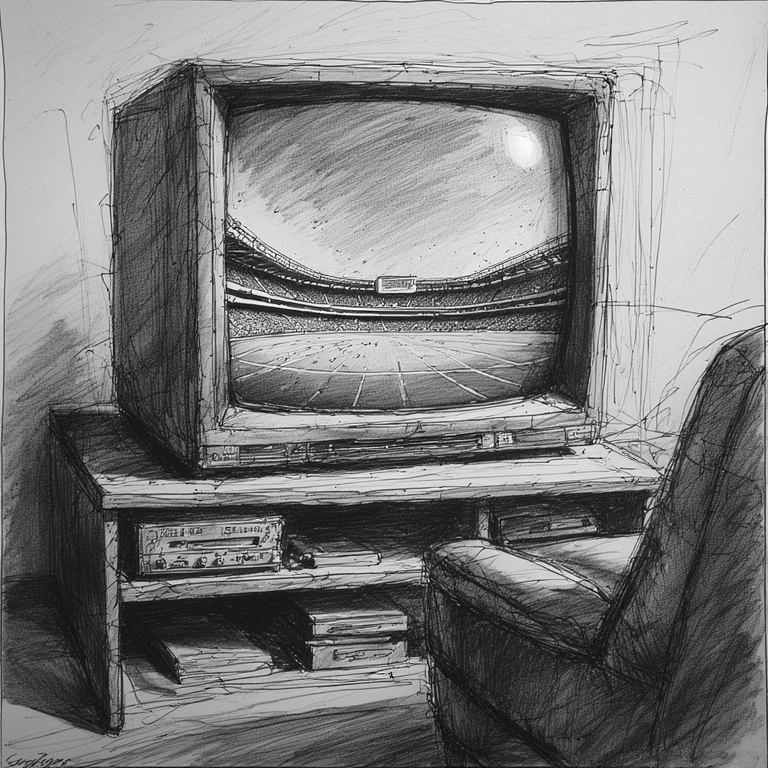
Accessibility for Introverted or Neurodivergent Fans
Live sports environments can be socially and sensorily overwhelming. For introverted or neurodivergent fans, the noise, crowds, and unpredictability may hinder enjoyment. Remote viewing offers a sanctuary—a way to engage deeply without overstimulation.
At home, fans can control their environment. They can adjust volume, lighting, and social interaction to suit their comfort. This autonomy supports sustained engagement and emotional safety.
Remote viewing also allows for solitary reflection. Fans can process the game at their own pace, without pressure to perform socially. This fosters a more authentic connection to the sport.
Digital platforms often include accessibility features like closed captions, simplified interfaces, and customizable layouts. These tools make sports more inclusive and respectful of diverse needs.
Live events prioritize spectacle; remote viewing prioritizes empathy. It recognizes that fandom is not one-size-fits-all.
By offering choice and control, remote viewing empowers fans to define their own experience. It transforms sports into a space of belonging, not just entertainment.
Integration with Daily Life and Ritual
Remote viewing allows sports to weave seamlessly into daily routines. Fans can watch while cooking, commuting, or relaxing after work. This integration makes sports a natural part of life, not a separate event.
Live attendance requires planning, travel, and time commitment. Remote viewing offers spontaneity and flexibility. It supports casual engagement and habitual connection.
Fans may build rituals around game time—preparing snacks, wearing team colors, or gathering with loved ones. These rituals foster emotional continuity and cultural identity.
Remote viewing also supports asynchronous engagement. Fans can watch replays, highlights, or condensed versions when convenient. This adaptability respects the rhythms of modern life.
Sports become a companion, not a disruption. They offer joy, reflection, and community without demanding sacrifice.
This integration deepens emotional resonance. It allows fans to connect meaningfully, even in brief moments.
Remote viewing transforms sports into a living thread in the fabric of everyday experience.
Reduced Pressure and Expectation
Live events often carry social and emotional pressure. Fans may feel obligated to cheer, dress a certain way, or conform to group behavior. Remote viewing removes these expectations.
At home, fans can engage authentically. They can express joy, frustration, or indifference without judgment. This freedom supports emotional honesty and personal connection.
Remote viewing also reduces performance anxiety. There’s no need to navigate crowds, interact with strangers, or perform enthusiasm. Fans can simply be present with the game.
This relaxed atmosphere enhances enjoyment. It allows for deeper focus and emotional resonance.
Live events may amplify stress, especially during high-stakes matches. Remote viewing offers calm and clarity.
It respects the viewer’s emotional boundaries and preferences.
This reduction in pressure fosters long-term engagement. Fans return not out of obligation, but because the experience feels safe and rewarding.
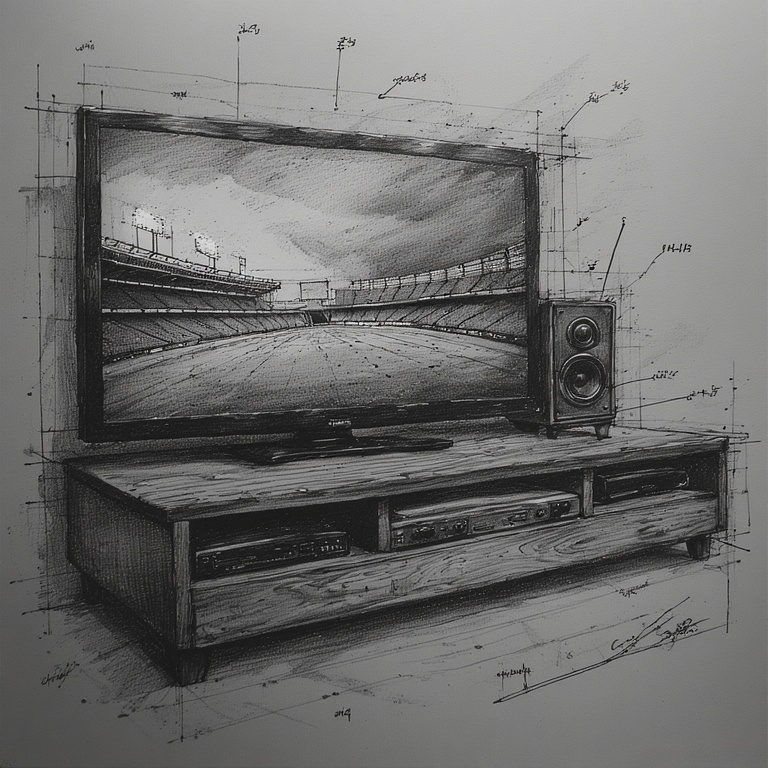
Evolution of Fan Identity and Digital Belonging
Remote viewing is reshaping what it means to be a fan. Digital platforms allow for personalized engagement, from curated content to interactive features. Fans build identities through playlists, avatars, and online communities.
This evolution reflects broader shifts in media consumption. Fandom is no longer confined to geography or tradition. It’s fluid, creative, and participatory.
Remote viewing supports this transformation. It offers tools for expression, connection, and storytelling. Fans can share reactions, create memes, and contribute to discourse.
This digital belonging fosters community and innovation. It allows fans to co-create culture, not just consume it.
Live events offer intensity; remote viewing offers continuity. It supports identity formation across time and space.
Fans become archivists, analysts, and artists. They shape the narrative as much as they follow it.
Remote viewing is not just a medium—it’s a movement. It redefines fandom as a dynamic, inclusive, and creative force.
Conclusion – A New Kind of Fandom
Remote sports viewing is not a compromise—it’s a transformation. It offers clarity, comfort, control, and connection in ways that live events often cannot. From technological innovation to emotional safety, the benefits are profound and multifaceted.
This shift doesn’t diminish the magic of stadiums—it redefines it. It invites fans to engage more deeply, more thoughtfully, and more inclusively. Remote viewing is not just about convenience—it’s about crafting a meaningful relationship with sport.
As technology evolves and cultural norms shift, the way we watch will continue to change. But the heart of fandom—passion, loyalty, and storytelling—remains constant. Whether in a packed arena or on a quiet couch, the game still matters.
Join the Discussion – Your Experience Matters
Have you found remote viewing to be more rewarding than attending live events? What features or rituals make your experience special?
#HomeAdvantage #ModernFandom #StreamTheGame #SportsCulture #FanExperience #InclusiveViewing #GlobalFandom #SportsTech #WatchSmarter #GameOnAnywhere #DigitalFandom #EcoFriendlySports #ReplayPower #SportsWithoutBorders #ComfortZoneFandom











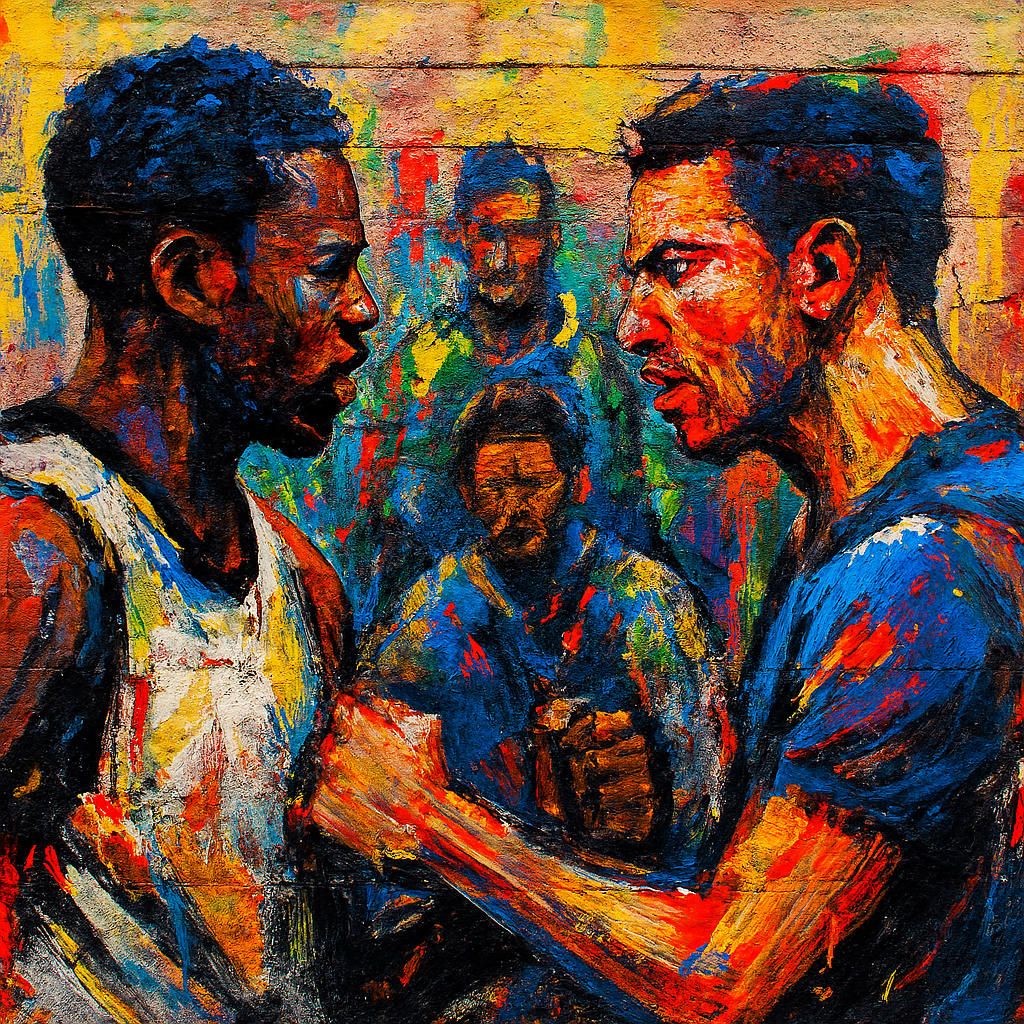



Leave a Reply